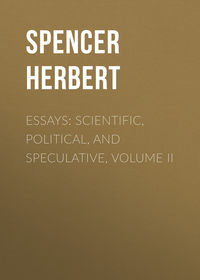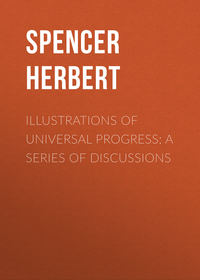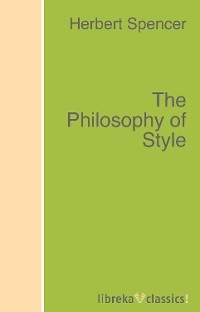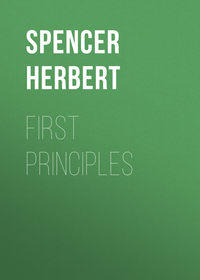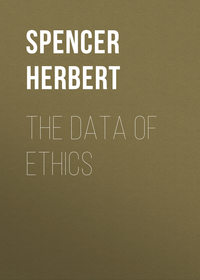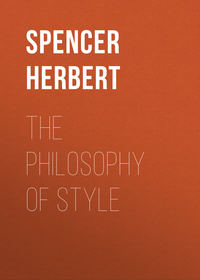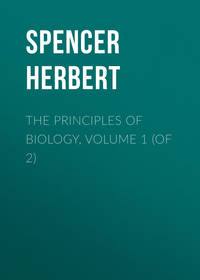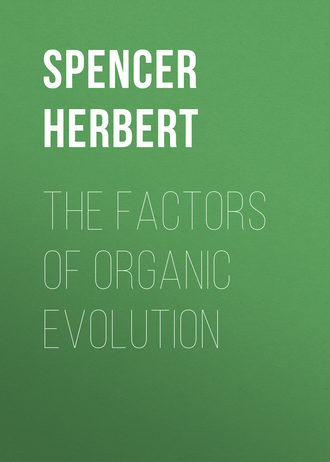 полная версия
полная версияThe Factors of Organic Evolution
Along with larger motives, one motive which has joined in prompting the foregoing articles, has been the desire to point out that already among biologists, the beliefs concerning the origin of species have assumed too much the character of a creed; and that while becoming settled they have been narrowed. So far from further broadening that broader view which Mr. Darwin reached as he grew older, his followers appear to have retrograded towards a more restricted view than he ever expressed. Thus there seems occasion for recognizing the warning uttered by Prof. Huxley, as not uncalled for.
Whatever may be thought of the arguments and conclusions set forth in this article and the preceding one, they will perhaps serve to show that it is as yet far too soon to close the inquiry concerning the causes of organic evolution.
Note
After the above articles were published, I received from Dr. Downes a copy of a paper “On the Influence of Light on Protoplasm,” written by himself and Mr. T. P. Blunt, M.A., which was communicated to the Royal Society in 1878. It was a continuation of a preceding paper which, referring chiefly to Bacteria, contended that —
“Light is inimical to, and under favourable conditions may wholly prevent, the development of these organisms.”
This supplementary paper goes on to show that the injurious effect of light upon protoplasm results only in presence of oxygen. Taking first a comparatively simple type of molecule which enters into the composition of organic matter, the authors say, after detailing experiments: —
“It was evident, therefore, that oxygen was the agent of destruction under the influence of sunlight.”
And accounts of experiments upon minute organisms are followed by the sentence —
“It seemed, therefore, that in absence of an atmosphere, light failed entirely to produce any effect on such organisms as were able to appear.”
They sum up the results of their experiments in the paragraph —
“We conclude, therefore, both from analogy and from direct experiment, that the observed action on these organisms is not dependent on light per se, but that the presence of free oxygen is necessary; light and oxygen together accomplishing what neither can do alone: and the inference seems irresistible that the effect produced is a gradual oxidation of the constituent protoplasm of these organisms, and that, in this respect, protoplasm, although living, is not exempt from laws which appear to govern the relations of light and oxygen to forms of matter less highly endowed. A force which is indirectly absolutely essential to life as we know it, and matter in the absence of which life has not yet been proved to exist, here unite for its destruction.”
What is the obvious implication? If oxygen in presence of light destroys one of these minutest portions of protoplasm, what will be its effect on a larger portion of protoplasm? It will work an effect on the surface instead of on the whole mass. Not like the minutest mass made inert all through, the larger mass will be made inert only on its outside; and, indeed, the like will happen with the minutest mass if the light or the oxygen is very small in quantity. Hence there will result an envelope of changed matter, inclosing and protecting the unchanged protoplasm – there will result a rudimentary cell-wall.
1
It is probable that this shortening has resulted not directly but indirectly, from the selection of individuals which were noted for tenacity of hold; for the bull-dog's peculiarity in this respect seems due to relative shortness of the upper jaw, giving the underhung structure which, involving retreat of the nostrils, enables the dog to continue breathing while holding.
2
Though Mr. Darwin approved of this expression and occasionally employed it, he did not adopt it for general use; contending, very truly, that the expression Natural Selection is in some cases more convenient. See Animals and Plants under Domestication (first edition) Vol. i, p. 6; and Origin of Species (sixth edition) p. 49.
3
It is true that while not deliberately admitted by Mr. Darwin, these effects are not denied by him. In his Animals and Plants under Domestication (vol. ii, 281), he refers to certain chapters in the Principles of Biology, in which I have discussed this general inter-action of the medium and the organism, and ascribed certain most general traits to it. But though, by his expressions, he implies a sympathetic attention to the argument, he does not in such way adopt the conclusion as to assign to this factor any share in the genesis of organic structures – much less that large share which I believe it has had. I did not myself at that time, nor indeed until quite recently, see how extensive and profound have been the influences on organization which, as we shall presently see, are traceable to the early results of this fundamental relation between organism and medium. I may add that it is in an essay on “Transcendental Physiology,” first published in 1857, that the line of thought here followed out in its wider bearings, was first entered upon.
4
Text-Book of Botany, &c. by Julius Sachs. Translated by A. W. Bennett and W. T. T. Dyer.
5
A Manual of the Infusoria, by W. Saville Kent. Vol. i, p. 232.
6
Ib. Vol. i, p. 241.
7
Kent, Vol. i, p. 56.
8
Ib. Vol. i, p. 57.
9
The Elements of Comparative Anatomy, by T. H. Huxley, pp. 7-9.
10
A Treatise on Comparative Embryology, by F. M. Balfour, Vol. ii, chap. xiii.
11
Sachs, p. 210.
12
Ibid. pp. 83-4.
13
Ibid. p. 185.
14
Ibid. p. 80.
15
Sachs, p. 83.
16
Ibid. p. 147.
17
A Treatise on Comparative Embryology. By Francis M. Balfour, LL.D., F.R.S. Vol. ii, p. 343 (second edition).
18
Balfour, l.c. Vol. ii, 400-1.
19
Balfour, l.c. Vol. ii, p. 401.
20
For a general delineation of the changes by which the development is effected, see Balfour, l.c. Vol. ii, pp. 401-4.
21
See Balfour, Vol. i, 149 and Vol. ii, 313-4.


